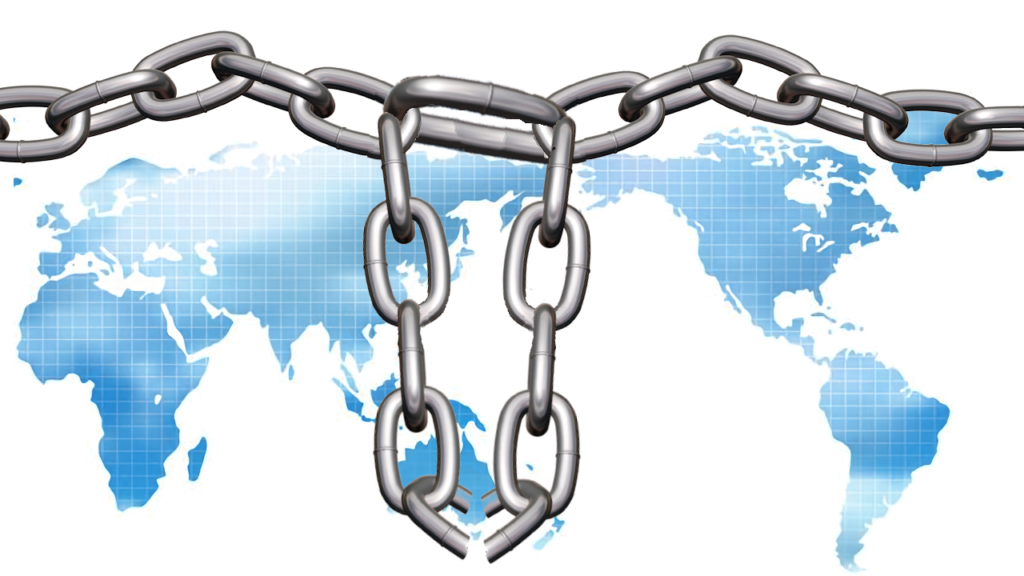As China’s economy slows, its leaders worry that emerging foreign government and transnational corporate strategies focused on trade with China will make matters worse. In many respects, they only have themselves to blame. Supply chain disruptions during the pandemic highlighted global dependence on Chinese manufacturing — and those dependencies raised serious concerns among China’s trading partners. At the height of the pandemic, there were numerous calls for decoupling from China as a way to protect national interests. As supply chain challenges eased and cooler heads prevailed, calls for decoupling decreased but admonitions to de-risk supply chains increased. China’s response is no surprise. Journalist Spriha Srivastava reports, “Chinese Premier Li Qiang criticized governments in the West for their idea of reducing dependency on China. In his opening remarks at the World Economic Forum’s ‘summer Davos’ in Tianjin [in late June], Li said that ‘some in the West are hyping up the so-called phraseologies of reducing dependencies and de-risking. … These two concepts are forced propositions.”[1]
Chinese leaders believe that companies, not governments, should make risk management decisions. However, shortly after Li’s World Economic Forum speech, the Chinese government once again demonstrated why governments and corporations remain concerned about depending too much on China. In early July, China announced “it will impose export restrictions on gallium and germanium products used in computer chips and other components to protect national security interests. The decision, widely seen as retaliation for U.S. curbs on sales of technologies to China, raised concerns that China might eventually limit exports of other materials, notably rare earths, whose production China dominates.”[2] The bottom line is this: Companies are likely to continue to pursue their de-risking strategies.
Near-shoring and Re-shoring
Of course, one way to lower risks from trade with China is to move manufacturing elsewhere. Vietnam and India are two countries that have benefited from such decisions. Many companies, however, have decided that, if they are going to move manufacturing out of China, they should move it closer to where the bulk of their customers reside — either through near-shoring or re-shoring manufacturing operations. According to the Material Handling & Logistics staff, “Near-shoring, friend-shoring, and on-shoring are all being looked into by organizations as certain geopolitical relations sour and threaten to disrupt supply chains.”[3] They note that a survey conducted last year by Proxima found, “Just over a quarter (26%) of CEOs [indicated] that they had actively looked at onshoring and nearshoring some or all of their supply chains. [In an updated survey,] that number has now grown; over four in ten (43%) of CEOs with resilience problems are already either onshoring or considering it as an option.”
Some of the decisions to reposition manufacturing are being made for reasons other than geopolitical tensions. Vicki Folmar Mekler, a Senior Integrated Supply Chain Optimization Consultant at Arkieva, explains, “Longer supply chains come with a cost, maybe not in the short-term and maybe not directly, but anyone managing a supply chain in the last [few] years can tell you: long supply chains are unpredictable, precarious, and let’s face it, untenable. And as supply chains get longer, so do lead times. And because of the long lead times, we are not able to respond to disruptions as quickly as we need to.”[4] Mekler admits the future remains perilous. She writes, “Uncertainty will never go away; in fact, today it feels like it’s only getting worse — pandemics, military invasions, economic downturns, labor shortages, political dysfunction, and increasingly severe weather.” What is her solution for addressing this uncertainty? She explains, “Since there’s not much supply chain managers can do about these circumstances, there is another way to address the uncertainty besides more inventory: Shorten our supply chains.” She insists shorter supply chains mean lower lead times, the need for less inventory, lower costs, greater sustainability, and increased circularity.
According to supply chain journalist Robert J. Bowman, China has taken notice of near-shoring and friend-shoring activities by American companies and is responding proactively. He reports, “Over the past 18 months, Chinese companies have leased up to 80% of industrial parks space in Mexico. China’s total investment in the country last year approached $500 million, up from $300 million in 2020 and $200 million in 2019. Chinese-financed projects in that country include production of solar panels, electric vehicle batteries, and housing materials for the U.S. market.”[5] He adds, “So much for the notion that a shift away from manufacturing in China would weaken that country’s grip on global production.”
Re-shoring, near-shoring, and friend-shoring aren’t panaceas for reducing risks associated with trade with China, but they are gaining momentum. Supply chain journalist Sean Ashcroft reports, “A study released by global consulting firm Kearney finds that reshoring initiatives have been so successful that companies yet to adopt the approach are scrambling to find facilities in Mexico and the United States.”[6] He adds, “The latest [Kearney Reshoring] Index suggests that as many as 96% of CEOs are evaluating re-shoring as a strategy, an increase of 18% on 2022. Most already have committed to reshoring, or are already re-shored.”
Concluding Thoughts
Most analysts now believe that decoupling from China, even if it were possible, would be a bad idea. Nevertheless, with tensions growing between the United States and China, analysts have to consider what a conflict with China would mean to the world’s economy. Ethan Karp, president & CEO of Ohio’s Manufacturing and Growth Network (MAGNET), admits that conflict with China is a worst-cast scenario; however, it’s one that must be explored. He writes, “Geopolitical experts predict trade would be rapidly swept off the seas, grinding American production to a halt, causing shortages and emergency rationing. The only way to avoid this is to bring home more production from China.”[7] He adds, “Globalism has largely been a good thing for manufacturing. Net-net it creates more prosperity to make things wherever it’s most economical to make them. But the disruption of the past few years has shown us the very real risks of being beholden to the ups and downs of foreign bedfellows. Take a good, hard look at your operations. What production could you begin reshoring today to reduce your global footprint? How could you nearshore production to less geopolitically risky places like Mexico? Reshoring is a long-term play, so it only helps if you start now, not after conflict erupts.”
As noted above, shortening supply chains offers other benefits besides reducing trade risks with China. Reduced transportation costs are among the most important of those benefits. Mekler concludes, “Hedging for uncertainty is OK. Reducing uncertainty is better. We can’t stop the war in Ukraine; we can’t stop the extreme weather; and we can’t avoid the next pandemic or the next recession. But we can reduce the amount of uncertainty we have to deal with in our supply chains by shortening them.”
Footnotes
[1] Spriha Srivastava, “China slams the West for ‘hyping up’ the concept of ‘de-risking.’ Here’s what it means and why China is so worried.” Business Insider, 27 June 2023.
[2] Mai Nguyen, “China’s rare earths dominance in focus after it limits germanium and gallium exports,” Reuters, 5 July 2023.
[3] Staff, “Nearshoring Not a Passing Fad,” Material Handling & Logistics, 12 July 2023.
[4] Vicki Folmar Mekler, “SOS(C): Shorten Our Supply Chains,” Arkieva, June 2023.
[5] Robert J. Bowman, “In the Nearshoring Game, Is China the Ultimate Winner?” SupplyChainBrain, 12 June 2023.
[6] Sean Ashcroft, “US reshoring is supply chain success – Kearney report,” Supply Chain Digital, 14 April 2023.
[7] Ethan Karp, “5 Ways for US Manufacturers to Be Less Dependent on China,” IndustryWeek, 5 May 2023.





